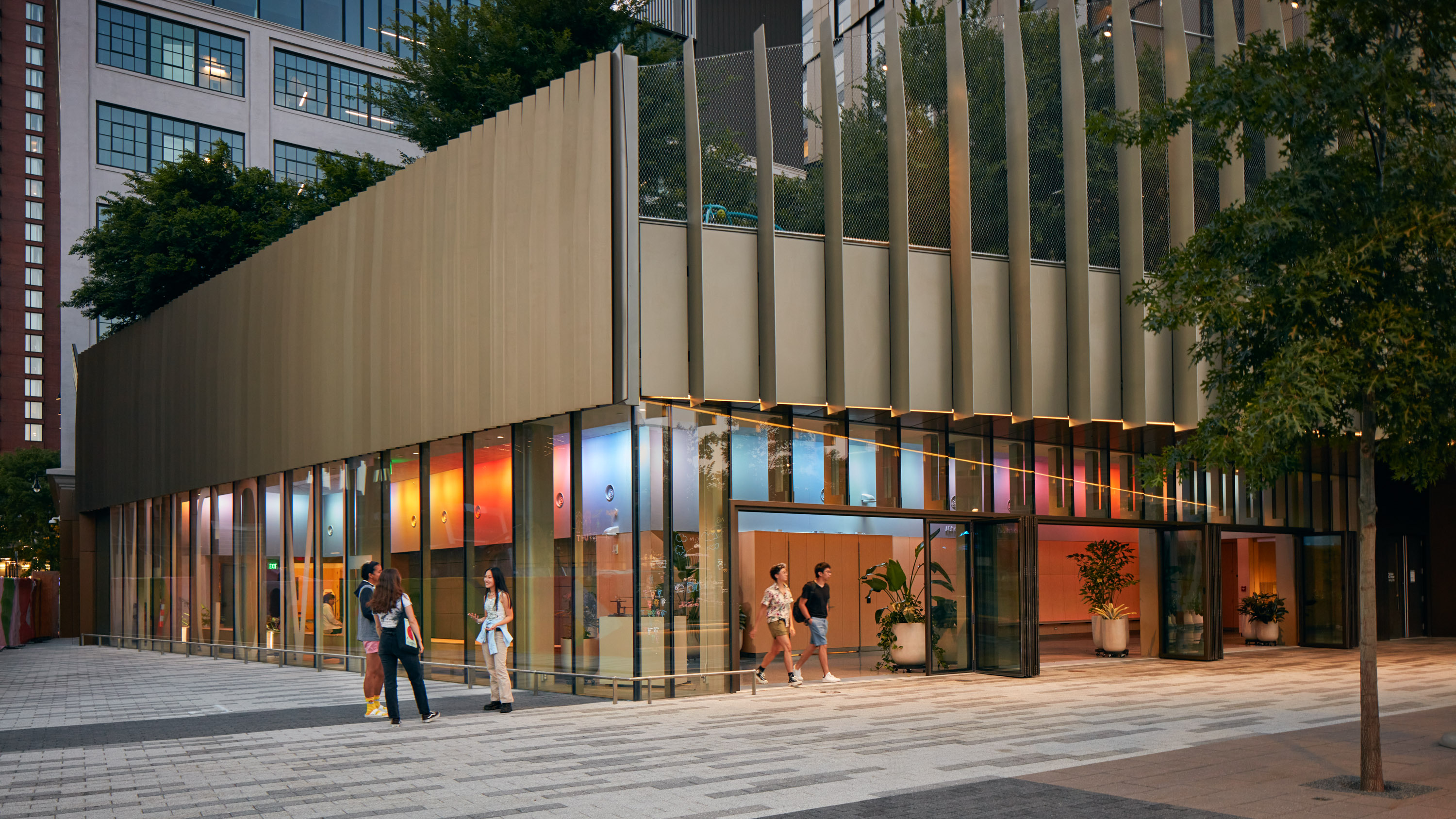Kendall lights up

Visitors to the new MIT Welcome Center in Kendall Square can’t miss one manifestation of the Institute’s creative, hands-on culture: MIT Illuminations, a programmable lighting installation launched by MIT Admissions, MIT Open Space Programming, and SoSo, an experiential design firm founded by alums.
The installation spans 120 linear feet, indirectly illuminating an acoustical fabric frieze. Software written by SoSo transforms scientific imagery, audio streams, and data feeds—a Doc Edgerton photo, a live lecture, an API tracking clean energy usage—into a variety of colorful lighting effects.
The project is open source: MIT staff envision a variety of partners contributing content, and all the code that controls the lights has been published to GitHub with simple instructions for how to create a similar system at home.
“The lights, like the MIT community, are colorful, evolving, and full of life,” says Chris Peterson, SM ’13, director of special projects at MIT Admissions and Student Financial Services. “We wanted to highlight the human element of MIT with an installation that felt as vivid and organic as our community in fact is, and that could serve as an educational opportunity as well.”
Keep Reading
Most Popular
Large language models can do jaw-dropping things. But nobody knows exactly why.
And that's a problem. Figuring it out is one of the biggest scientific puzzles of our time and a crucial step towards controlling more powerful future models.
How scientists traced a mysterious covid case back to six toilets
When wastewater surveillance turns into a hunt for a single infected individual, the ethics get tricky.
The problem with plug-in hybrids? Their drivers.
Plug-in hybrids are often sold as a transition to EVs, but new data from Europe shows we’re still underestimating the emissions they produce.
Google DeepMind’s new generative model makes Super Mario–like games from scratch
Genie learns how to control games by watching hours and hours of video. It could help train next-gen robots too.
Stay connected
Get the latest updates from
MIT Technology Review
Discover special offers, top stories, upcoming events, and more.